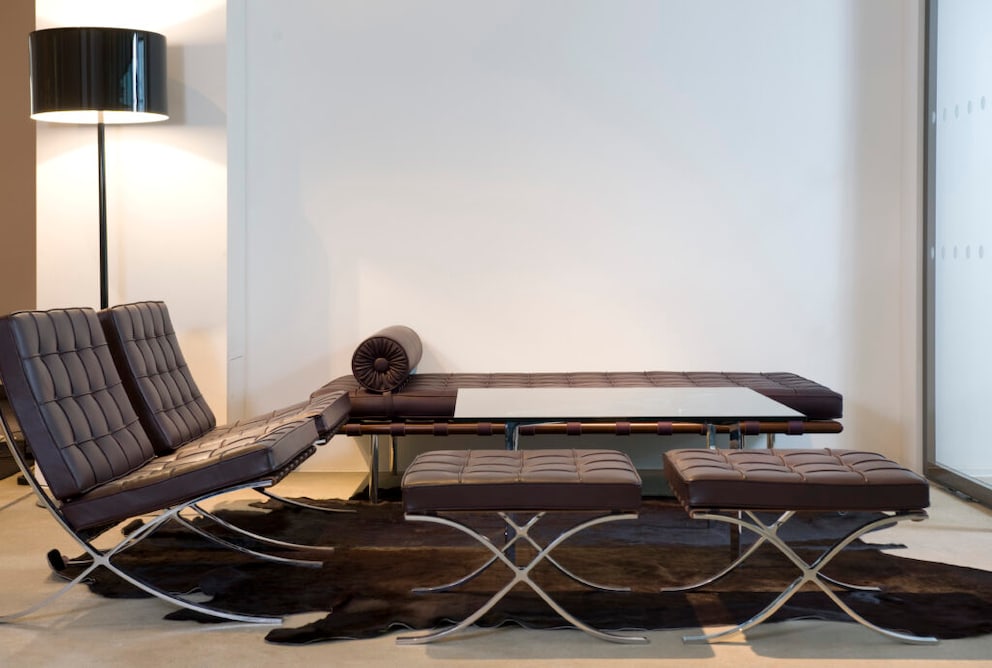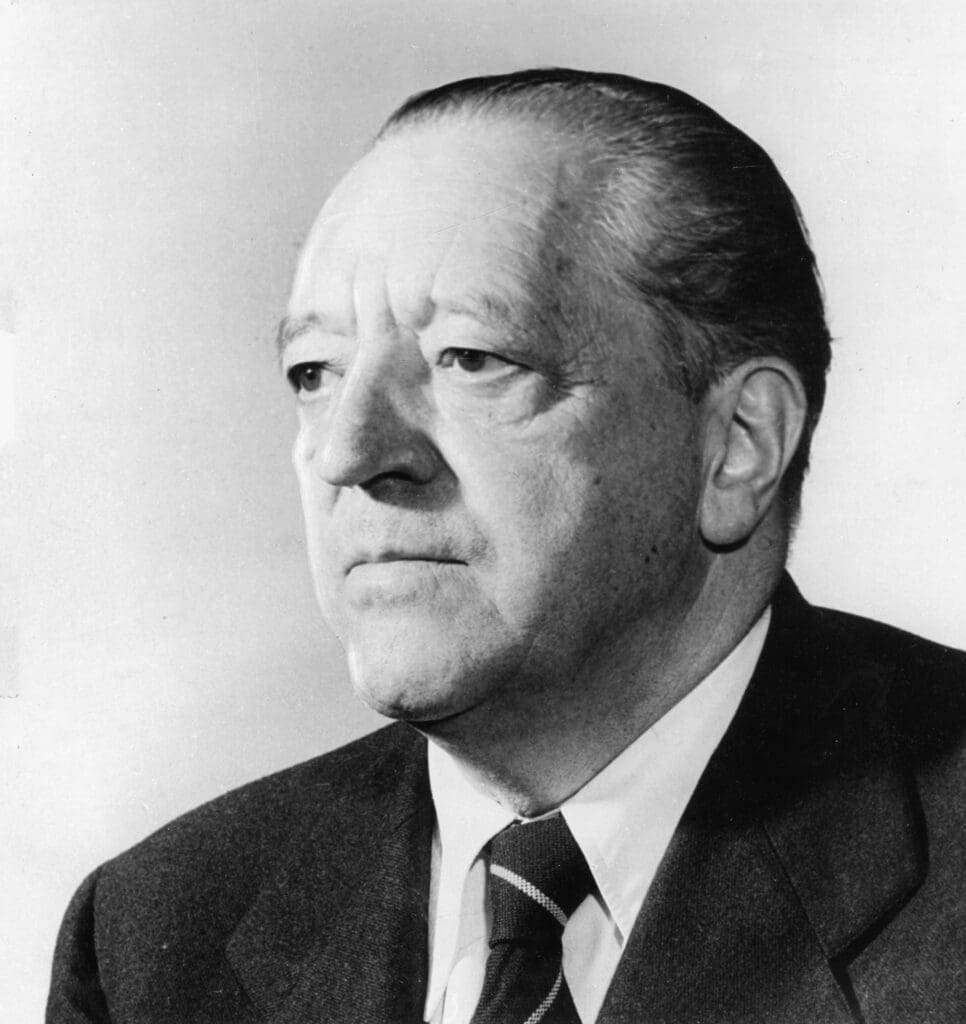September 10, 2023, 11:10 am | Read time: 4 minutes
It is one of the most famous furniture designs of the modern era. It’s no surprise, then, that the Barcelona Chair is still frequently seen in trendy office lofts and hotel lobbies today. However, the story of this popular lounge chair began with a royal occasion.
The Barcelona Chair is nearly 100 years old, yet it has lost none of its luster. The chair with its unique design is still a popular piece in trendy office settings or modern hotel lobbies. One of the most famous furniture designs of the 20th century was created by architect and designer Ludwig Mies van der Rohe and later distributed by the American manufacturer Knoll International. It’s the story of a special lounge chair that began unconventionally but impressively and had to overcome several hurdles over time.
The Story of a Throne
The story of the Barcelona Chair starts off grandly and with plenty of attention. The classic piece of furniture was designed by the German-American architect and designer Ludwig Mies van der Rohe for none other than the then Spanish royal couple, King Alfonso XIII and his wife Victoria. The two royals attended the opening ceremony of the German Pavilion at the 1929 World’s Fair in Barcelona.
To ensure a dignified, elegant, yet extravagant seat, the designer conceived a lounge chair that resembles a throne. It’s hardly surprising that the German Pavilion became the main attraction of the World’s Fair. With his design for the Barcelona Chair, van der Rohe created a true masterpiece of modern architectural history.
The Chair with Scissor Legs

The story of the Barcelona Chair is the story of a very special design. A chair with scissor legs is still considered iconic today. Van der Rohe was significantly inspired by a scissor chair, which was already used in antiquity and the Middle Ages. He wanted to modernize that classic form as a kind of throne. And because the occasion was quite noble, the design couldn’t be too grand or expensive.
Accordingly, van der Rohe envisioned a strikingly wide backrest and seat for his creation. Added to this was the distinctive frame with crossed legs and a remarkably delicate curve. Both aspects still give the Barcelona Chair a casual elegance. More than 60 years later, the lounge chair is produced in its original design by the American furniture manufacturer Knoll International. The company has held the exclusive manufacturing rights since 1953. Over time, the matching Barcelona ottoman was also developed.
Also interesting: How the Eames Lounge Chair Made History
The Making of the Barcelona Chair
Van der Rohe liked the idea of an apparently floating seat. He deliberately placed the scissor legs on the sides of the chair. He also left nothing to chance with the cushions for the backrest and seat. These are notably wide and remarkably thickly padded. For each cushion, 40 individual pieces are cut from a leather hide, sewn by hand, and equipped with piping and buttons.
Initially, the first models were produced by the Berlin metal company Josef Müller and the Bamberg metal workshops. From 1932 to 1934, Thonet took over production. Because Van der Rohe emigrated to the U.S. in 1938, various workshops in Chicago and New York took over production after World War II. It was only some time later that Florence and Hans Knoll became aware of the lounge chair and eventually added it to their collection. Since 1964, Knoll International has been manufacturing the chair frame from chrome-plated stainless steel, which is hand-polished to a high gloss. Various leathers and colors are also available.

The Butterfly Chair and Its Unusual History

How to Add Chrome Highlights to Your Home

The Story of the “Grasshopper” Floor Lamp by Gubi
Architect and Designer Ludwig Mies van der Rohe

Ludwig Mies van der Rohe made a name for himself primarily as an architect. He is considered one of the most important representatives of modernism, whose buildings were characterized by an open, strictly geometric line. One of his prestige projects is the model settlement at Weißenhof in Stuttgart, which included four apartment buildings. In addition, van der Rohe also designed furniture, which he often developed as part of architectural projects.
Also interesting: These 5 Things You Should Hide Before Bringing Your Date Home
The best example here was the Barcelona Chair, which was also characterized by a minimalist design and a modern design language. In 1930, van der Rohe was appointed the new director of the Bauhaus in Dessau, which he led only for a short time before it was permanently closed by the Nazis. After he emigrated to the U.S. in 1938, van der Rohe was able to achieve further successes and significantly shaped the architecture and design history of the 20th century.

